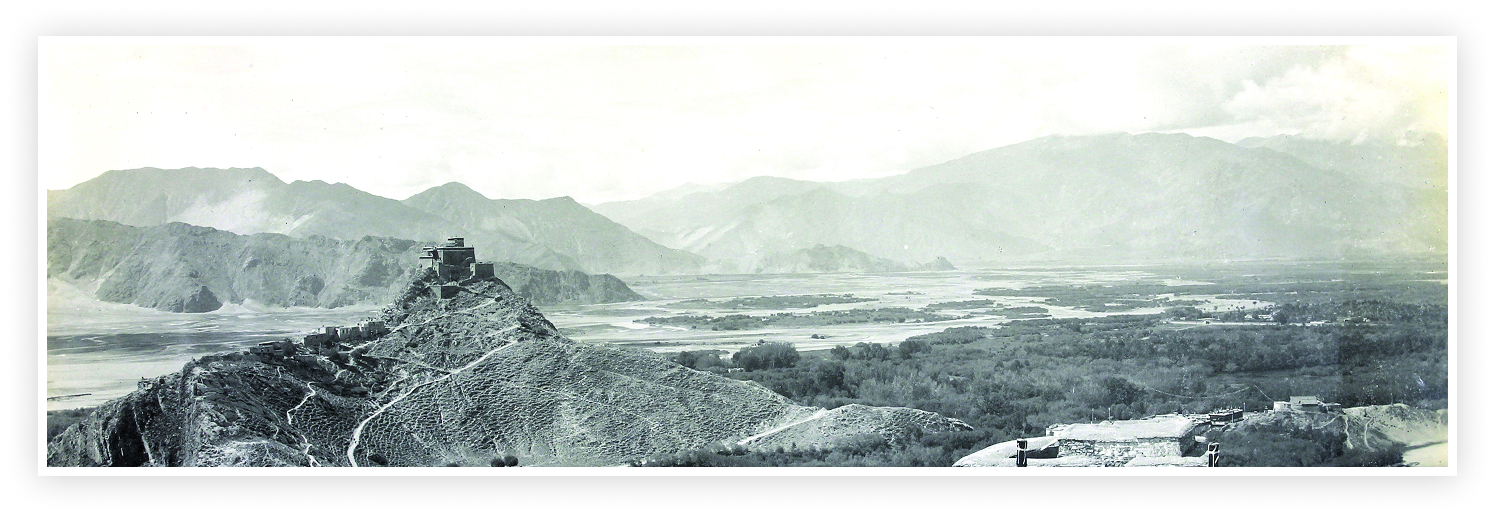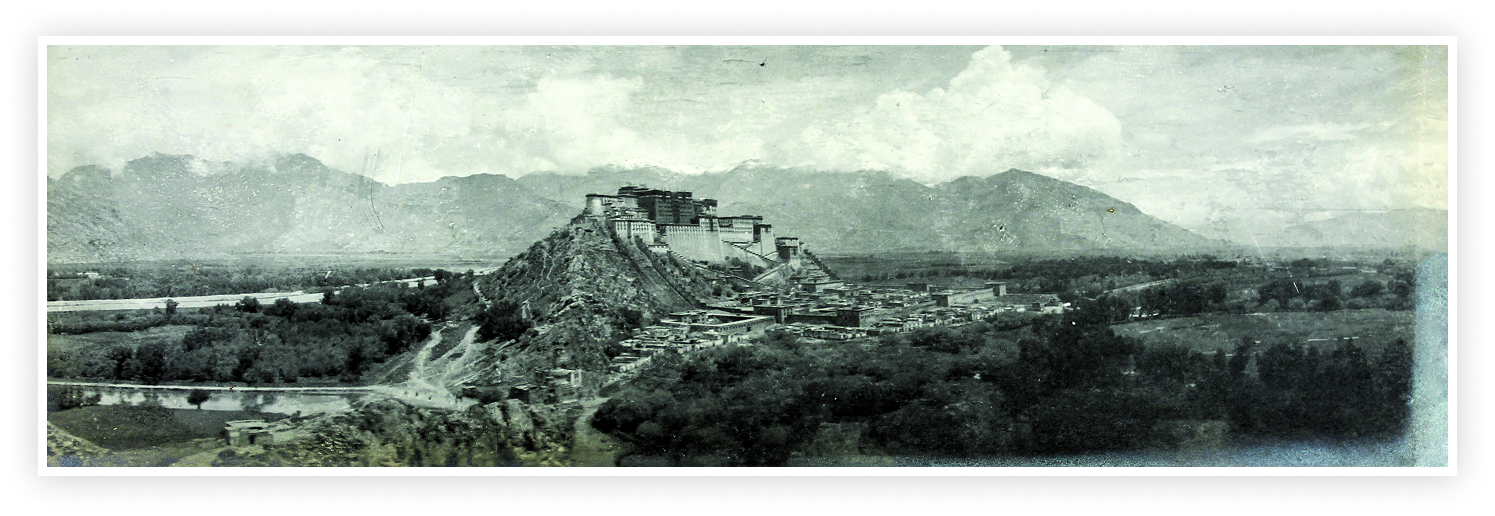Photographic Memories
The photographs in the Lhasa Album record places and things that are no longer there or have changed beyond all recognition. Some were ruined by the British in 1904, while others were destroyed during China’s ‘Cultural Revolution’ in the 1960s and 1970s. More recently, Lhasa has lost many landmarks and sacred sites to Chinese redevelopment projects.

The medical college on Chakpori was destroyed by People’s Liberation Army soldiers in March 1959.
These photographs now act as memory banks for the Tibetan people. They keep safe a record of Tibet before its occupation in the 1950s by China’s People’s Liberation Army. The photographs in the Lhasa Albums are bittersweet. They allow us to step back in time – more than 100 years ago – and see what life was like then. Yet, they also mark the moment when Tibet was invaded by the British and when China’s interests in Tibet were reawakened.

The Yuthok Bridge with its turquoise roof tiles once stood on the eastern edge of Lhasa. Today, it is a boutique in a busy shopping area of the city.

This photograph of Lhasa taken in August 1904 shows the many parks that surround the city.
The photographs in the Lhasa Album record places and things that are no longer there or have changed beyond all recognition. Some were ruined by the British in 1904, while others were destroyed during China’s ‘Cultural Revolution’ in the 1960s and 1970s. More recently, Lhasa has lost many landmarks and sacred sites to Chinese redevelopment projects.

These photographs now act as memory banks for the Tibetan people. They keep safe a record of Tibet before its occupation in the 1950s by China’s People’s Liberation Army. The photographs in the Lhasa Albums are bittersweet. They allow us to step back in time – more than 100 years ago – and see what life was like then. Yet, they also mark the moment when Tibet was invaded by the British and when China’s interests in Tibet were reawakened.

